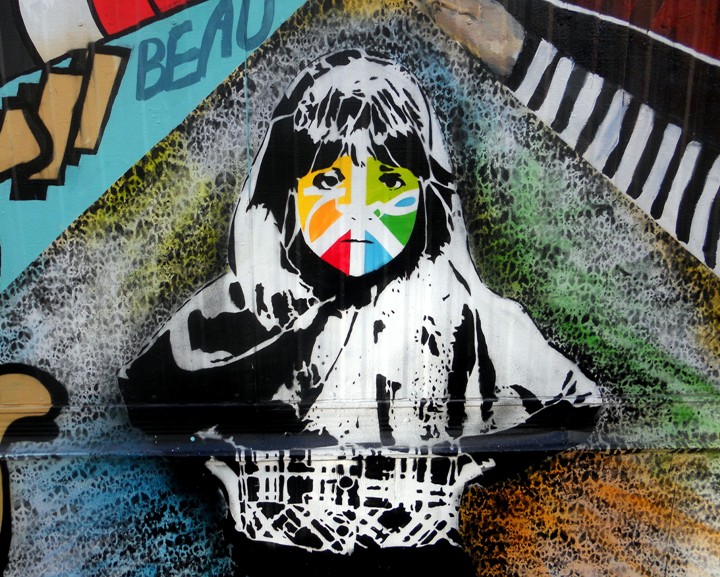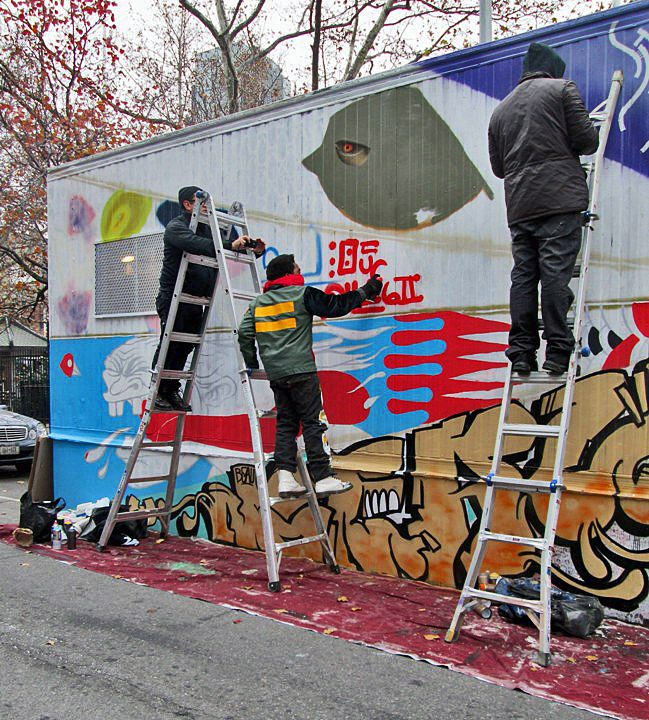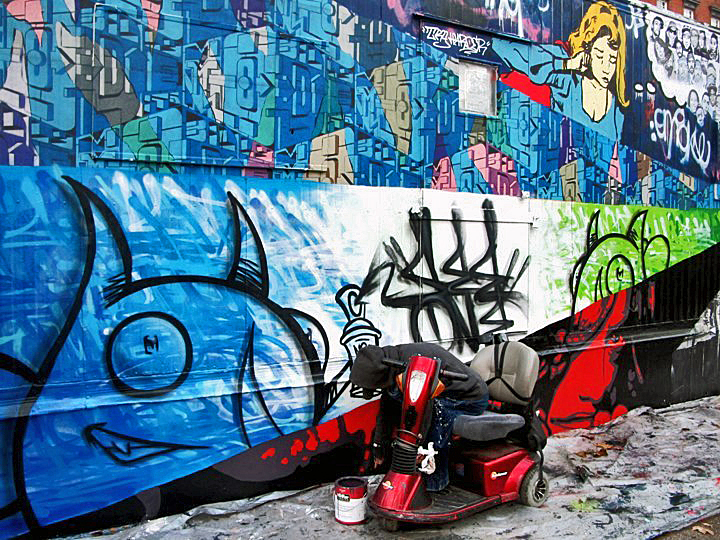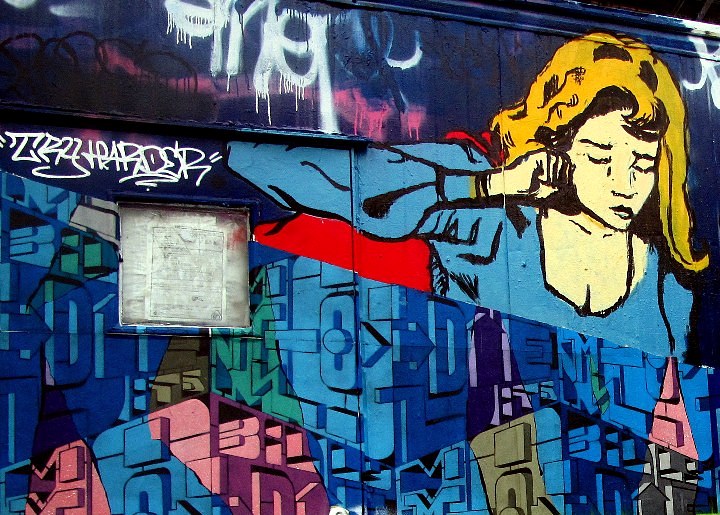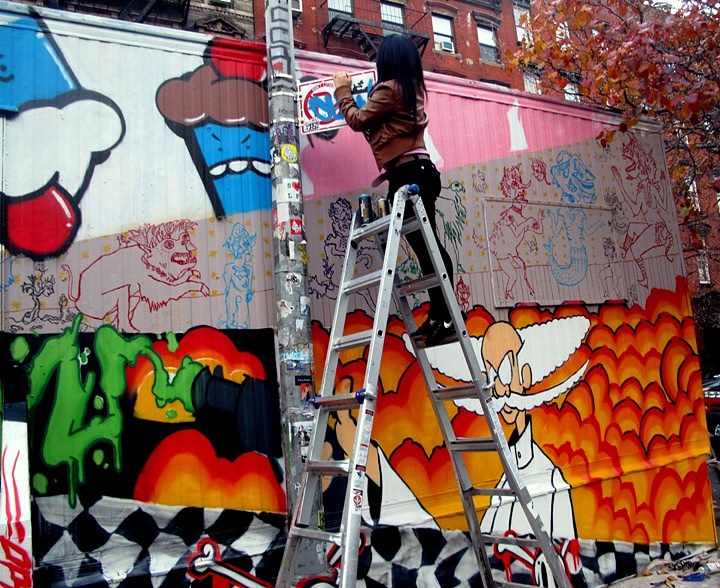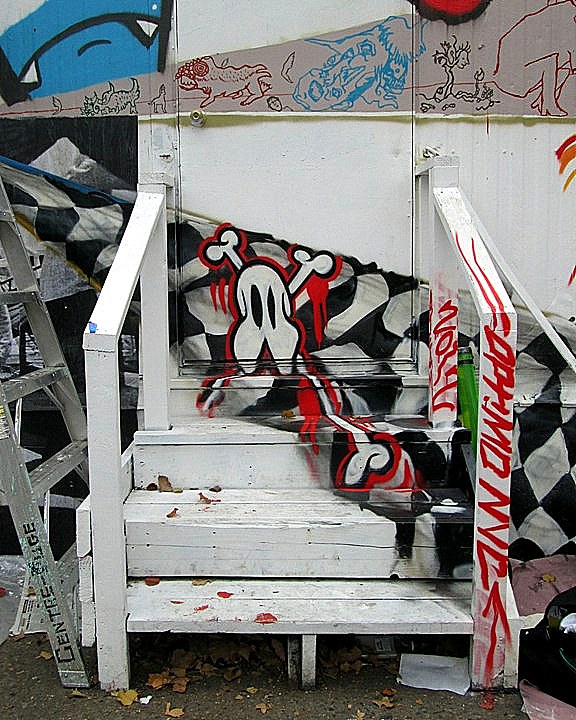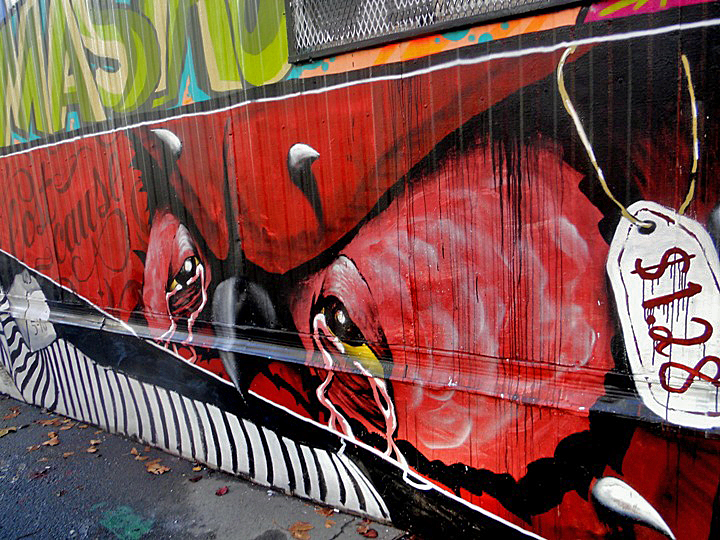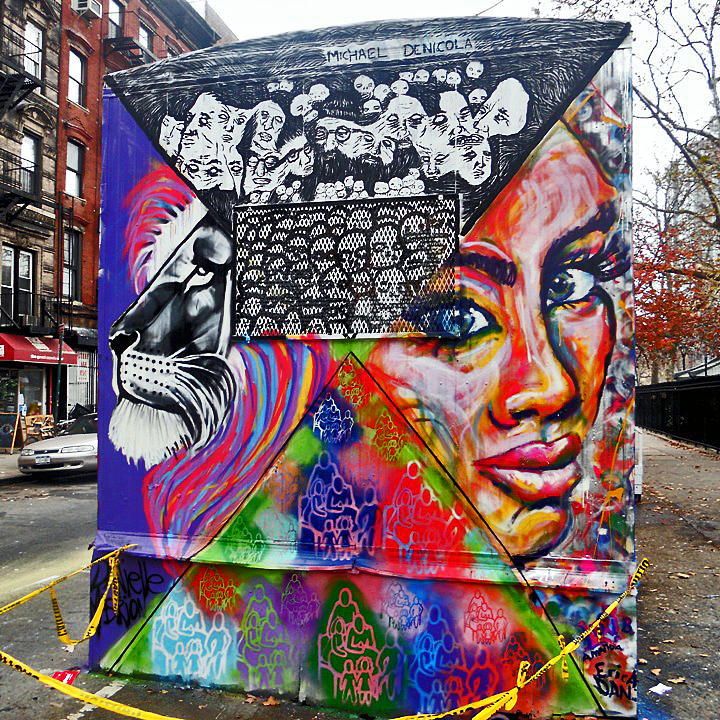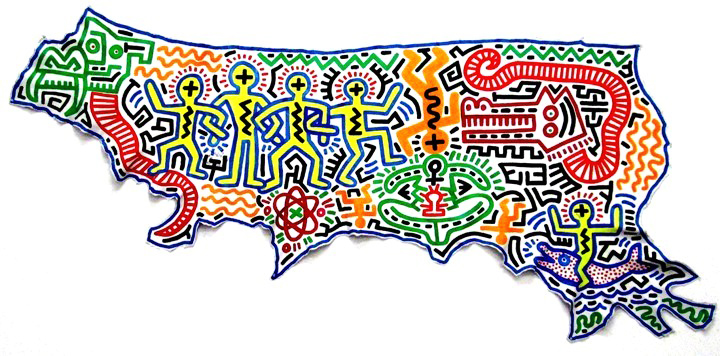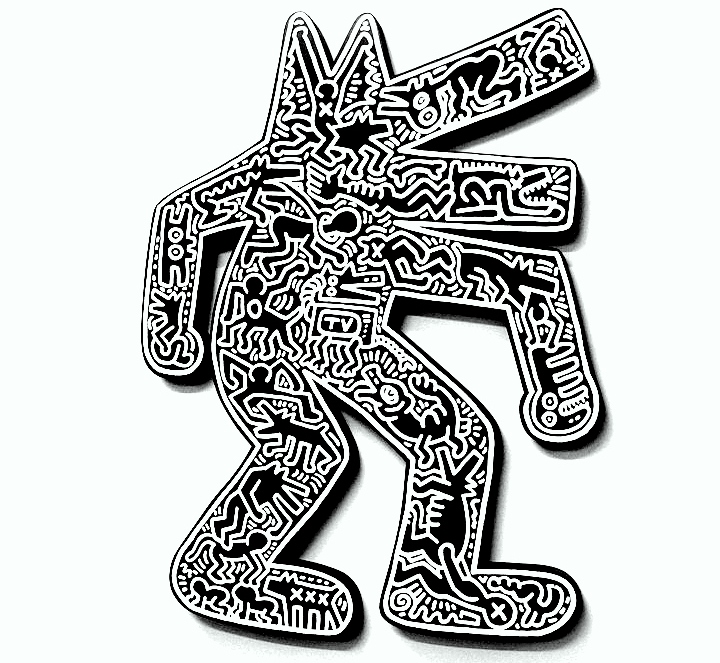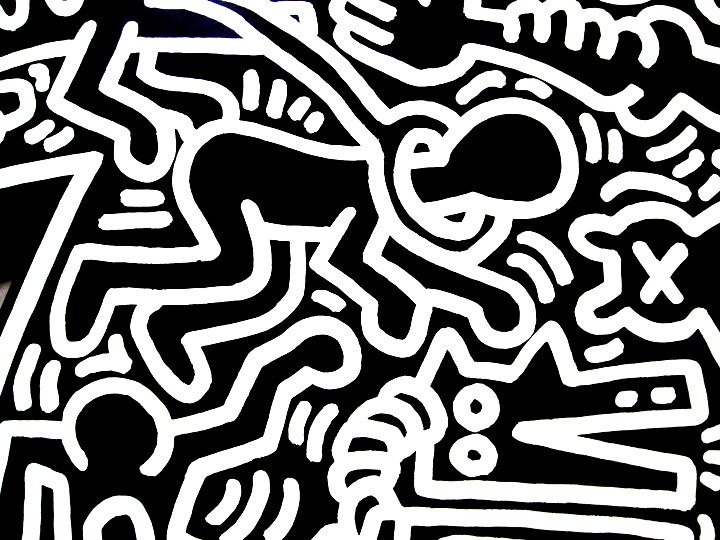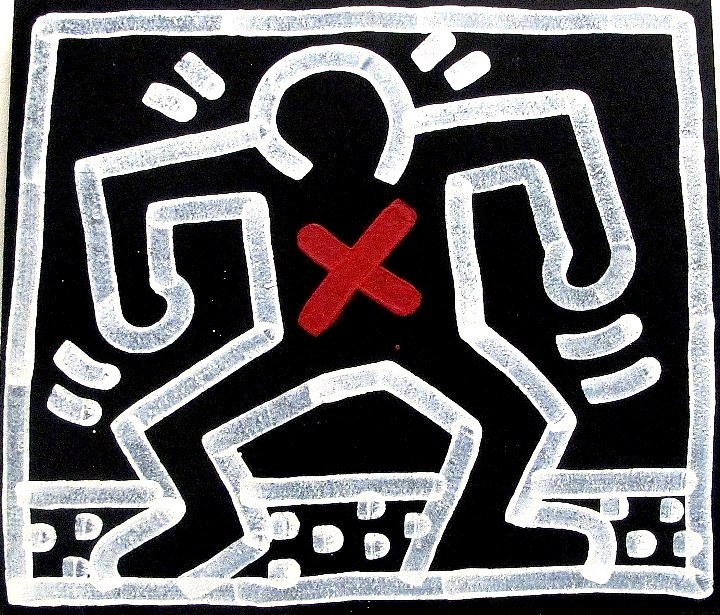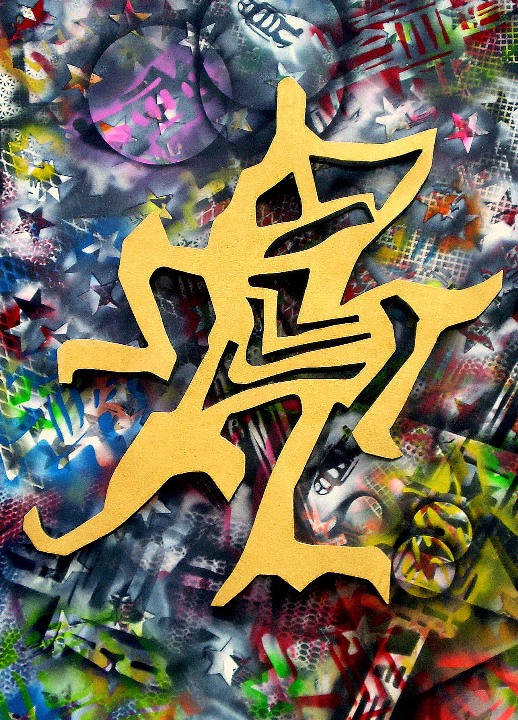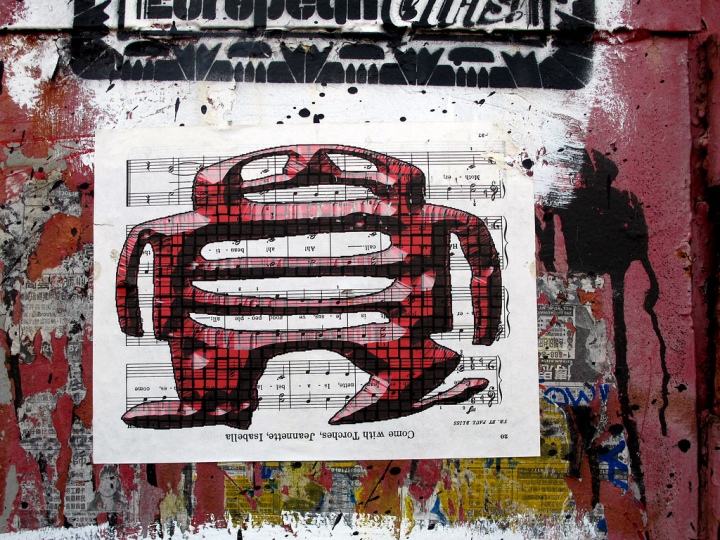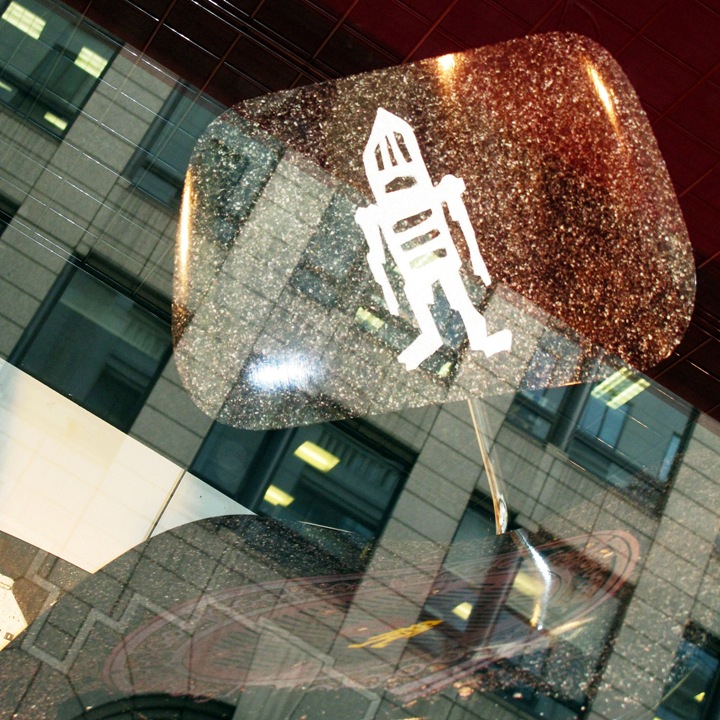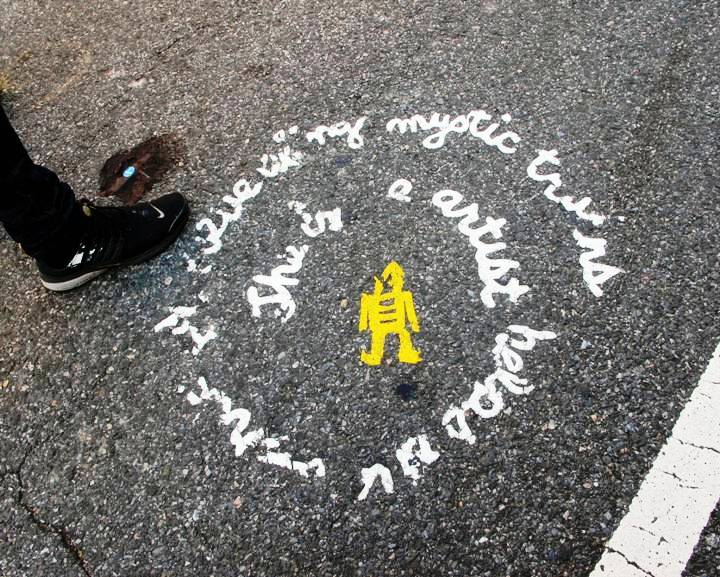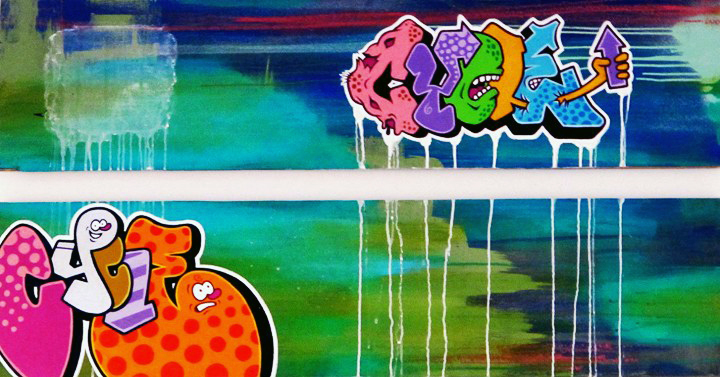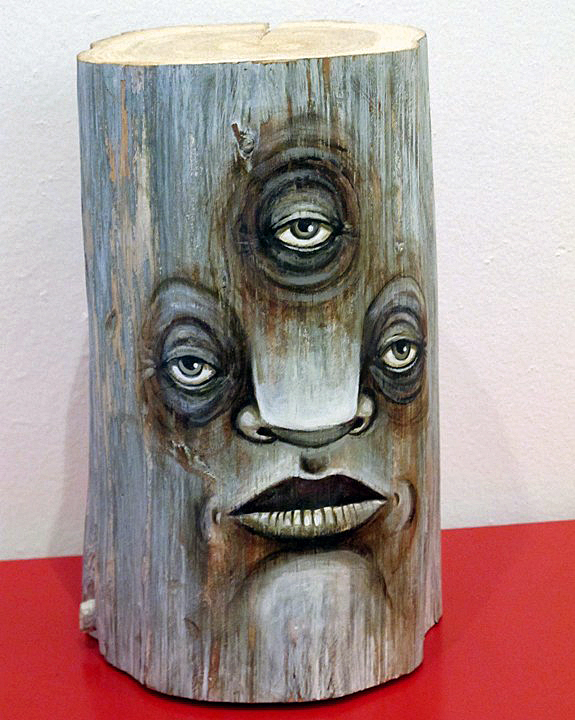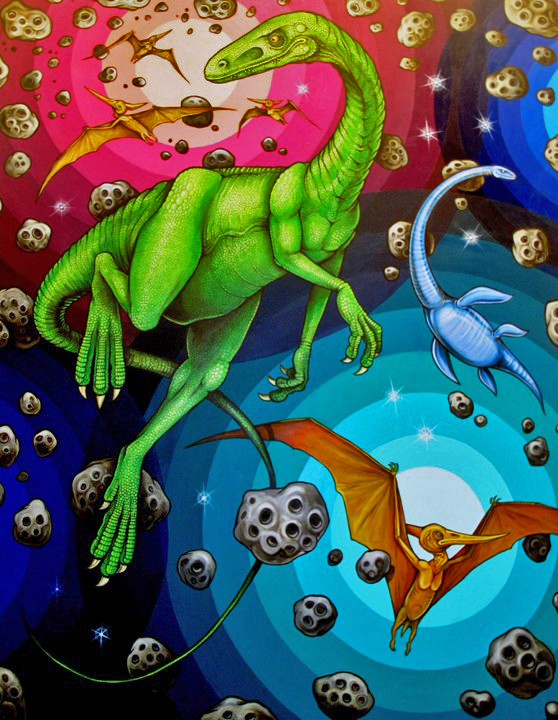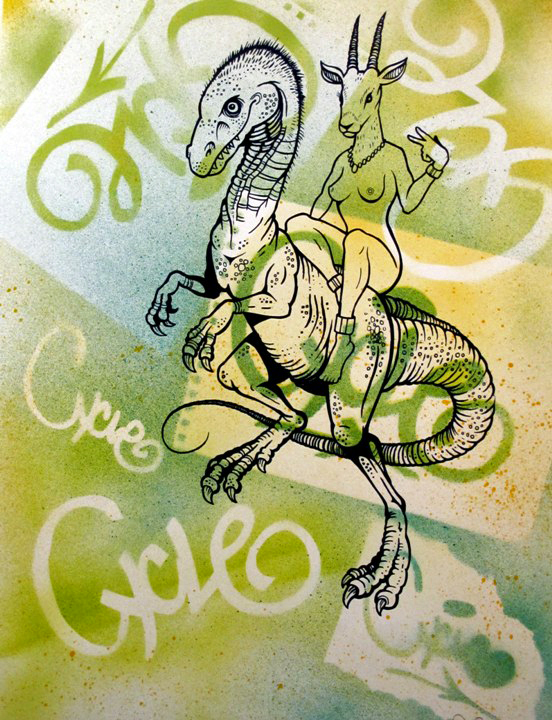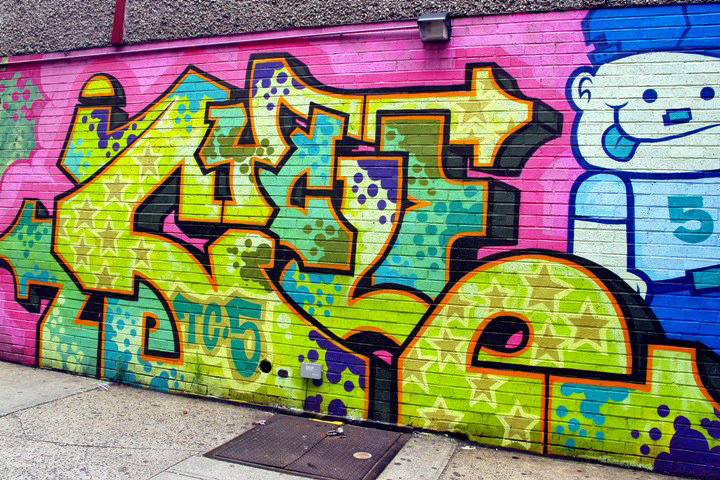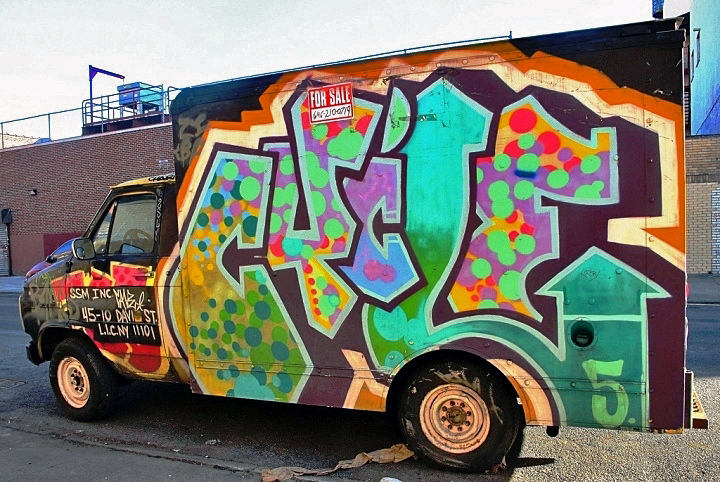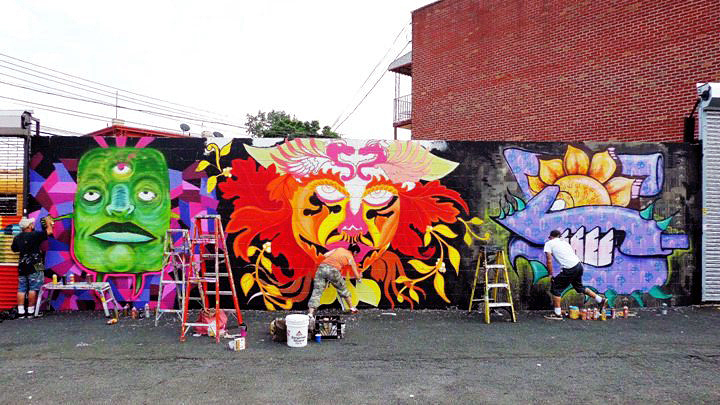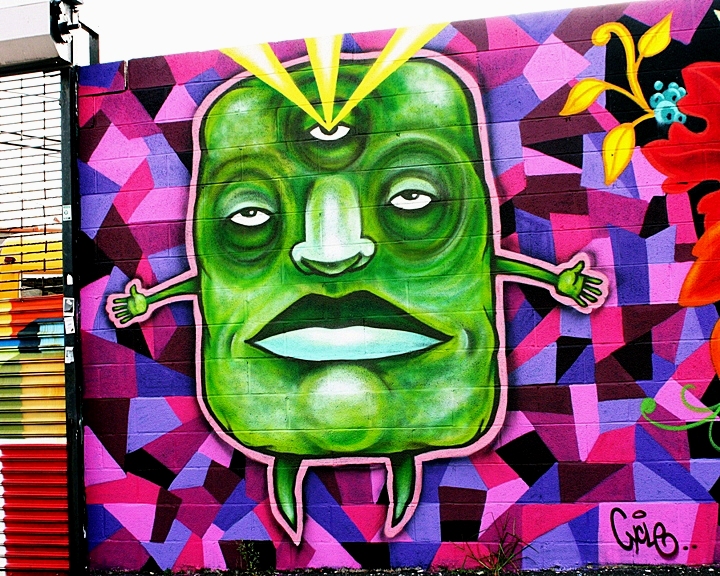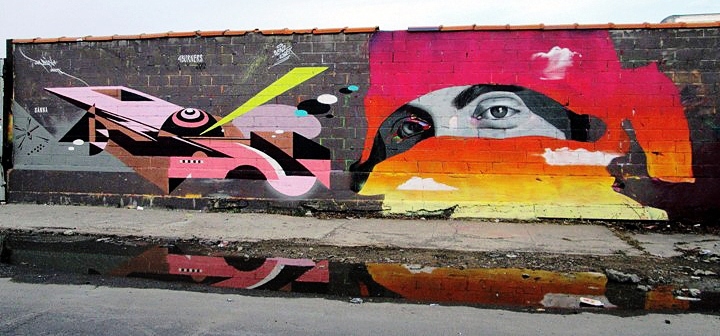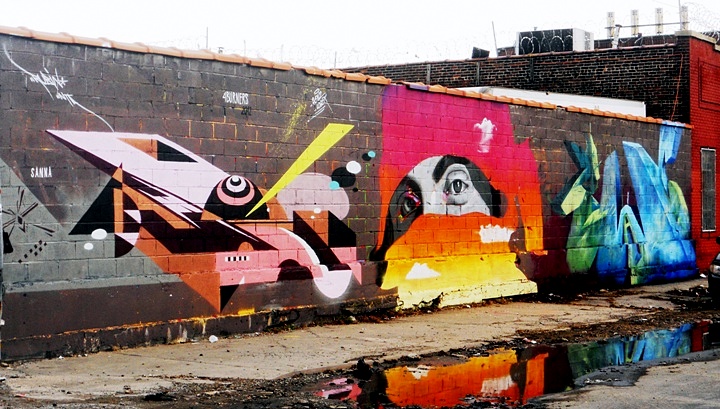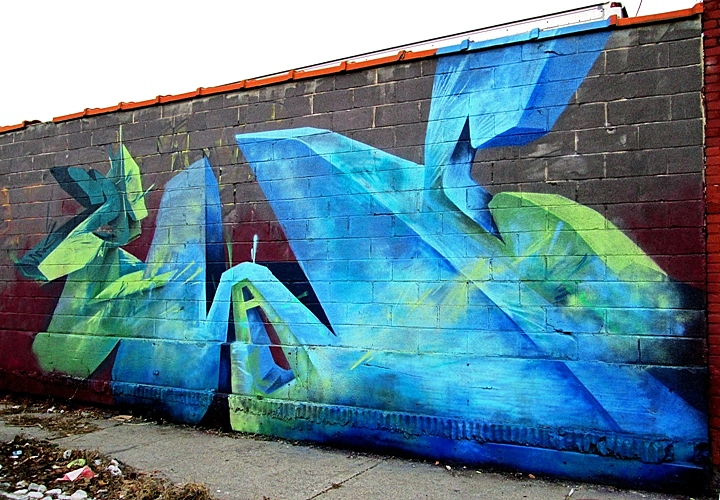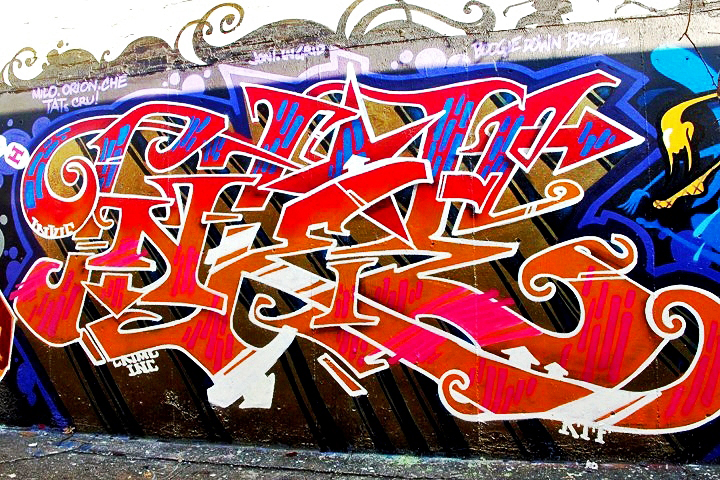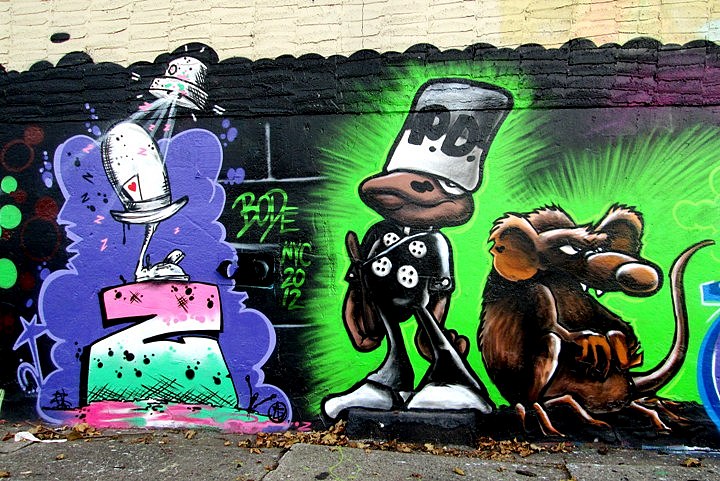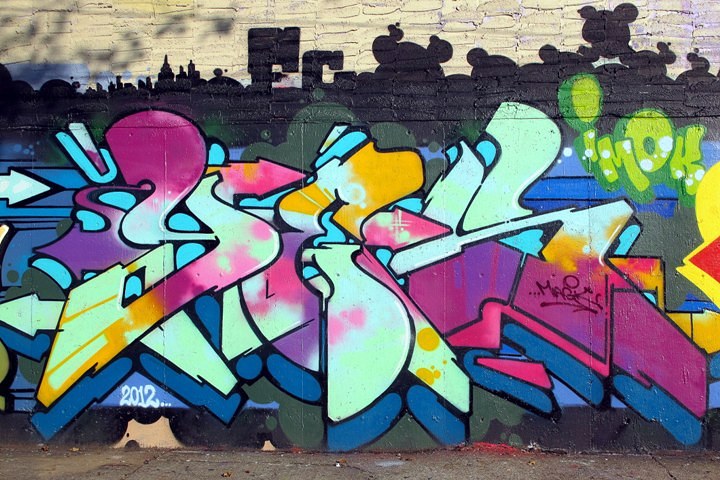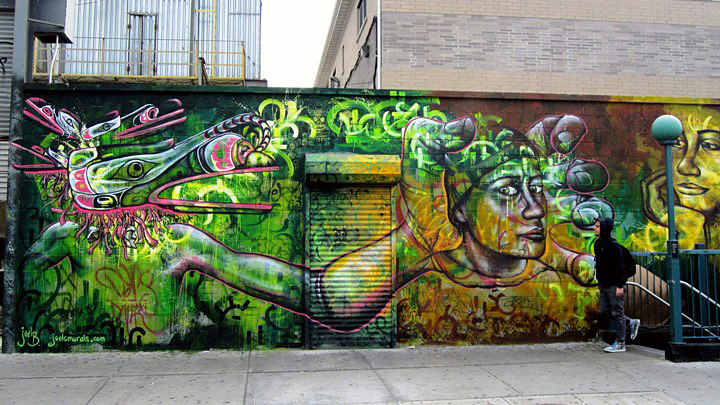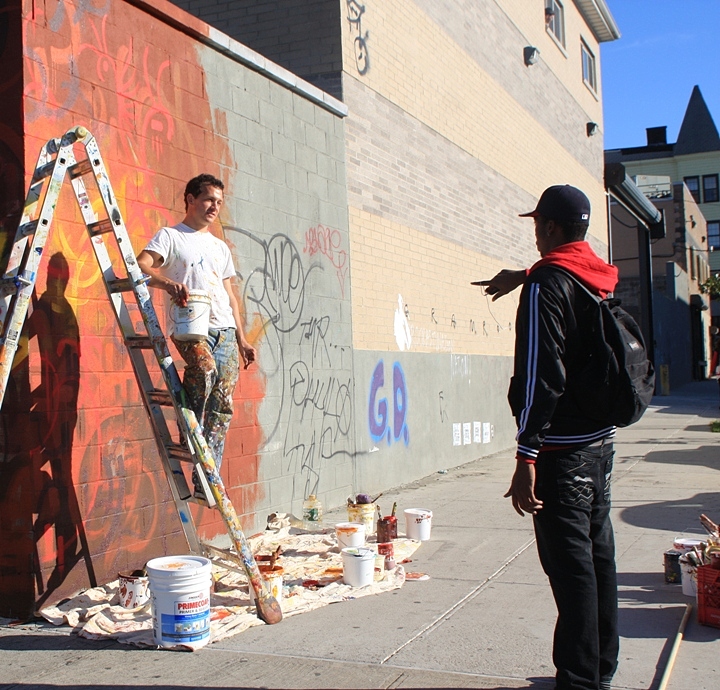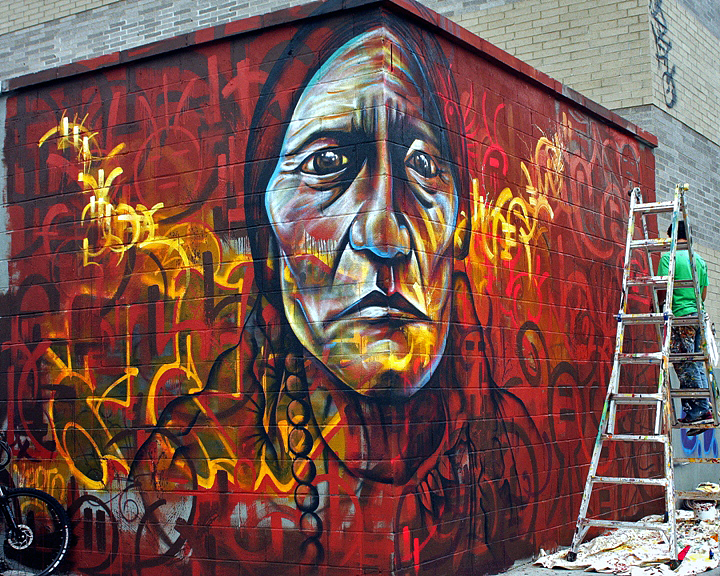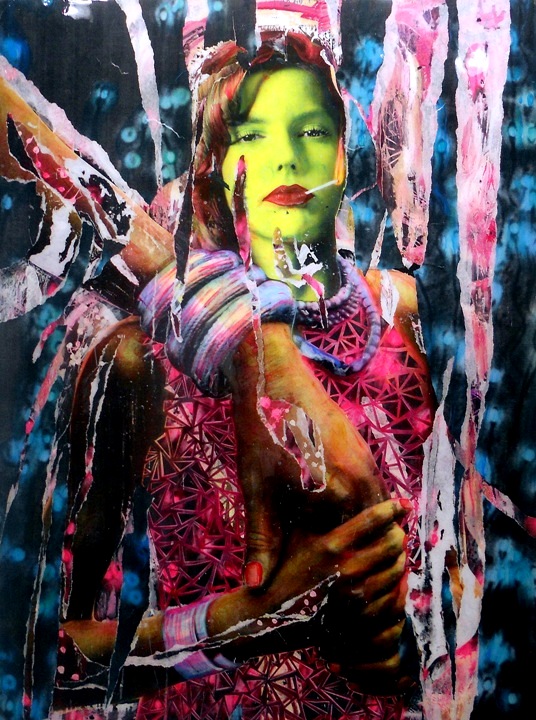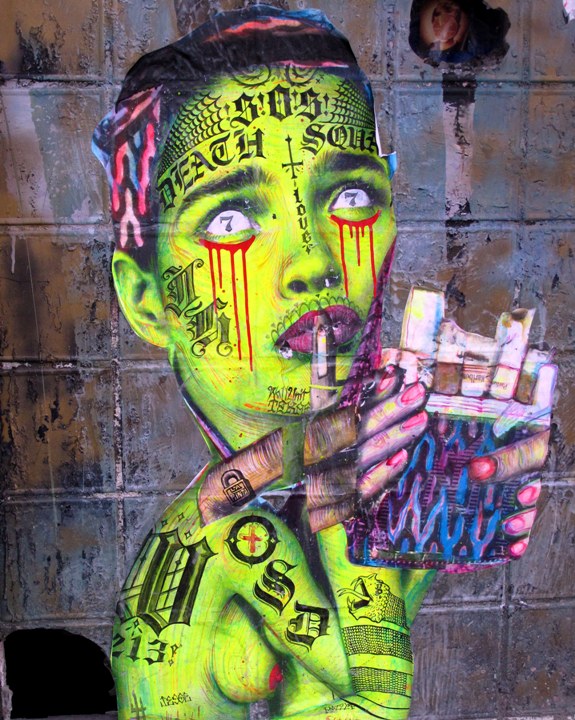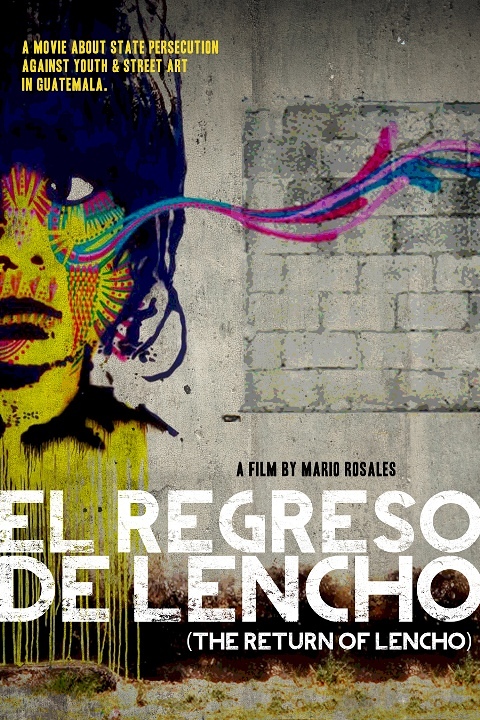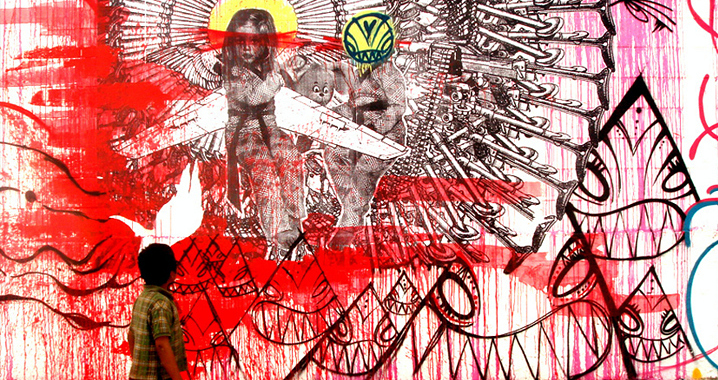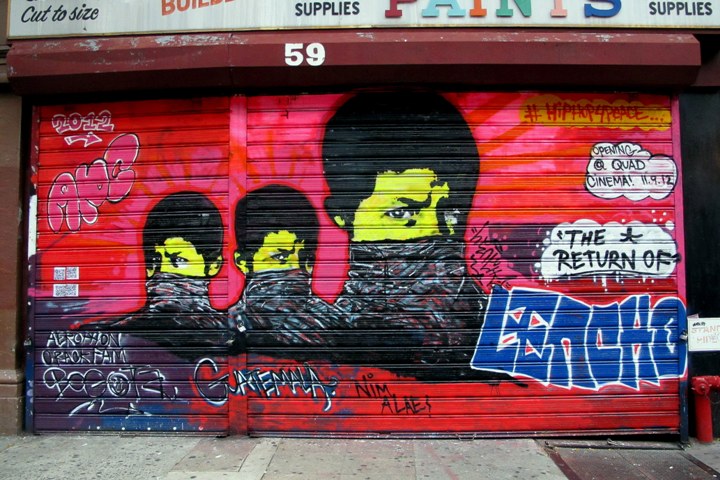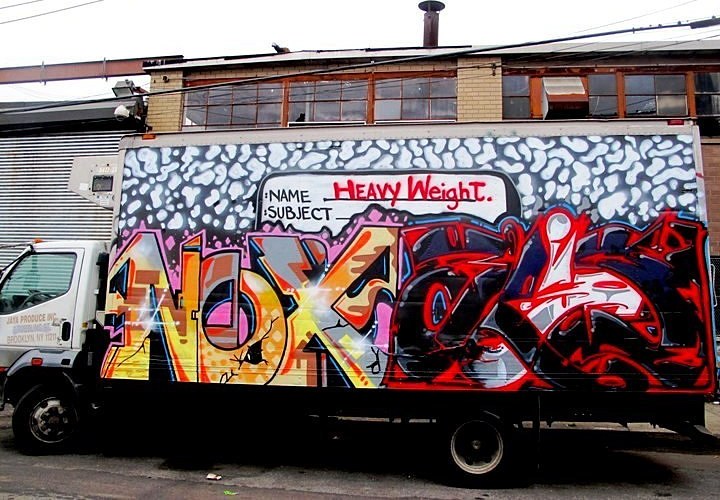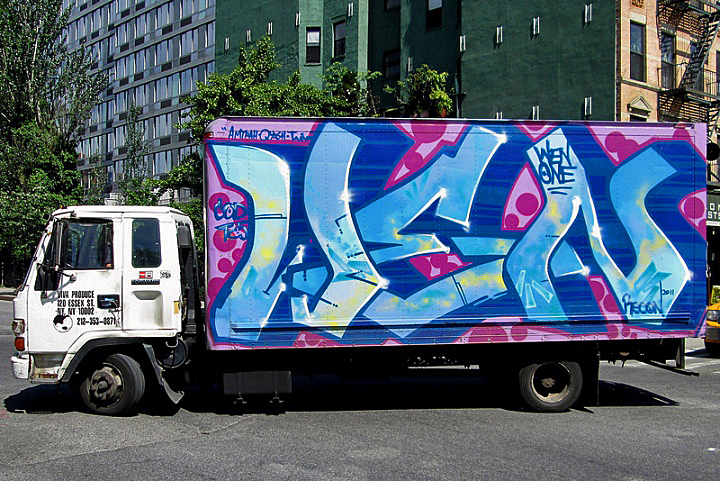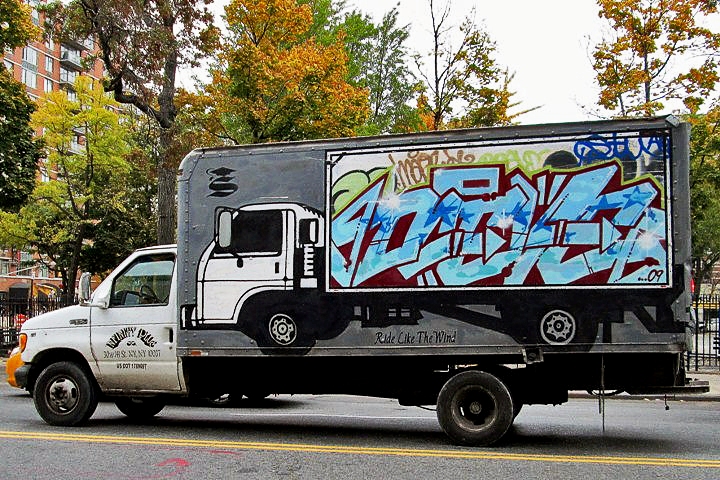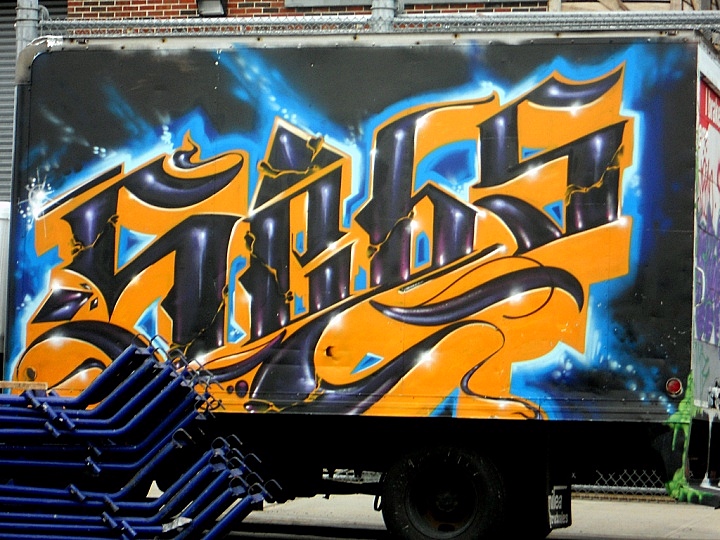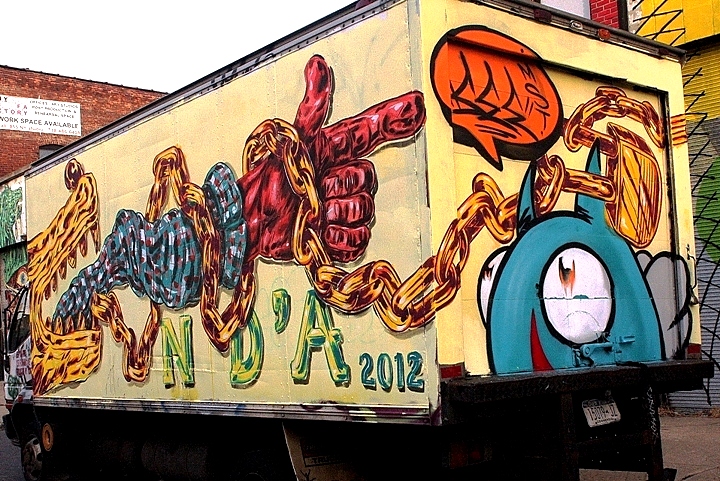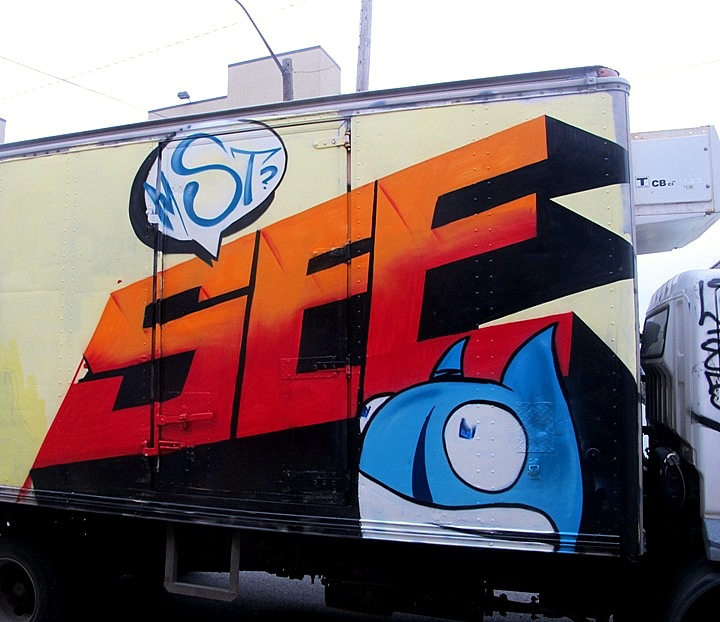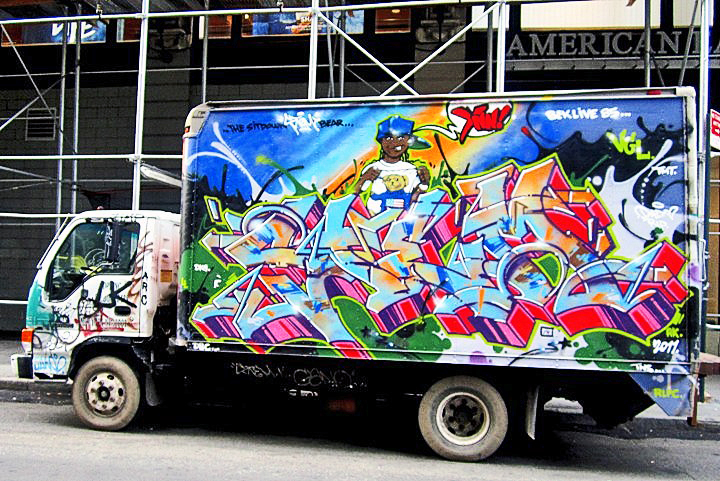Recently selected by RJ Rushmore of Vandalog for Complex Magazine as one of the “fifty greatest street artists right now,” LNY has shared his visions with us in NYC on walls in Chelsea, Williamsburg and Bushwick. We recently had a chance to speak with him before he left for the streets of Korea.

When and where did you begin getting up?
I began in high school – doing some toy crap, here and there, in Jersey City and West New York, NJ. What I really liked about it was the freedom to try and also to fail. It was just play. But things got serious four or five years ago, when I started drawing again – making portraits of friends. I was living in Seoul and visiting Japan, and I found myself making life-size drawings of people and pasting them onto walls. That was a turning point.
Why did you begin writing on public spaces? What made you continue?
At the beginning it was just something fun to do. But now it’s a way for me to share my vision with others, as I like telling people’s stories through my eyes. Also, it’s my way of giving back to the people. And it all makes so much sense. I wouldn’t do anything else.
Do have any preferred surfaces?
Anything really, the more textures, the merrier. I see the work on the streets as just another layer added to the city’s history, architecture and community. I consider street art successful when all these layers come together.
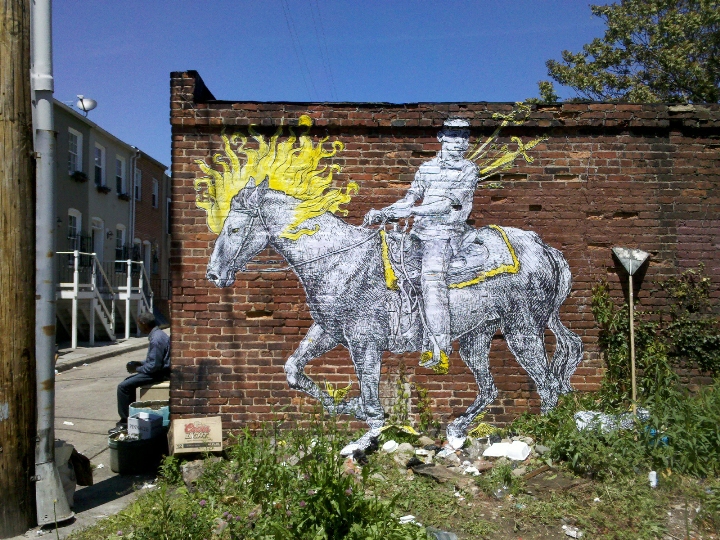
Do you have any preferred spots?
I enjoy the travel aspect of making art. I’m in a sense nomadic. My favorite spots in a city are those that seem to scream for interaction, for care or for a second look.
Who or what inspires you?
Anybody who is going hard and doing his or her thing… either art-wise or not. This game is not about limits or rules so you’ve got to make your own. I try to surround myself with people that inspire me and they range from friends to family members to public figures like Newark’s Mayor Cory Booker.
Have you any memorable moments from your work on the streets that stand out?
Most memorable are people’s reactions — either acceptance or rejection of a piece — by a particular community. Kids coming by and giving you props is the best. But any reactions – even criticisms – are good.
With whom have you worked?
I have worked with a range of people including fashion bloggers, scientists, painters, architects and writers. I love collaborating with people like ND’A because of the bold rhythms in his brush strokes or OverUnder because of his way with lines and his productivity. I enjoy working with anybody who is passionate, and I like to be as open as possible because the mix of mediums and people can only push the work forward.

Have you been arrested?
Yes. I was arrested yesterday. I opened my mouth when it should have stayed shut.
Well, I’m glad you’re here today. Where else – besides here in Bushwick — have you gotten up?
I’ve gotten up in Korea, Japan, China, Berlin, Paris, Ecuador, Mexico, Philadelphia, New Jersey, Atlanta, Mexico and other spots. I will get up anywhere life takes me.
How does your family feel about what you are doing?
They love it and are very supportive. As long as they see me safe and happy, they are happy.
Have you made money from your art?
Yes, and I thank all the people who have supported my vices and adventures by buying work directly from me or from galleries. I’m grateful to all those institutions, festivals, foundations and individuals who have facilitated grants and invited me to work with them. I appreciate everyone who’s given me materials or just a helping hand. Much, much, much love and keep it up.
What are some of your other interests?
I love shooting videos and editing them because I have no idea what I’m doing — same with taking pictures. I am an avid amateur at a lot of things. As an artist, I am open to all cultures, as we artists impact our immediate surroundings and help create them. So I eat up books, watch an insane amount of movies and TV shows, read blogs, look at fashion, watch season games, try all types of foods and drugs and listen to all kinds of music. I was about to try the cinnamon challenge last week, but I’m glad I didn’t.
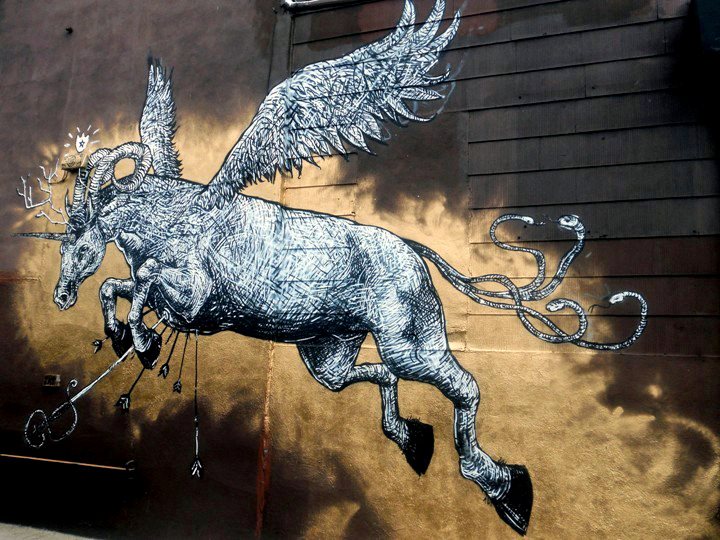
What do think about the street-art/graffiti divide?
I don’t see a divide, but I can feel one. In New York it is more of a personality or ego-driven divide. Graffiti and street art cannot exist without each other. They owe a lot to each other as modes of expression and they’ve developed a symbiotic relationship in the market place. Graffiti is an act of assertion and ownership that comes out of a feeling of disfranchisement. It’s a free form of expression that started back in the day in Philly and the Bronx and has traveled across the globe. Passed from one generation to the next, it has translated into an act that reclaims public space and builds upon that freedom to be active in a society that would rather keep you passive. This is precisely what street-artists are doing, and you can see the different directions the movement is taking with activist work and masterful muralists around the world. Most of the beef I see is ego-driven and I hate that noise, because it denies the greater possibilities of both.
How do you feel about the movement of street-art and graffiti into galleries? Have you exhibited your work in galleries? If so, where and which ones?
Graffiti and street art can never exist in galleries. The intention is different. The audience is different. But both graffiti and street artists can create work for galleries and for the people who visit galleries. I appreciate both arenas. I have shown in tons of galleries all over, but I don’t really keep track or add them to a CV. But some of my favorites were in Korea and Berlin and now in Brooklyn – where I will have a solo show early next year at LowBrow Artique.
What do you think of the role of the Internet in all this?
The internet is a double-edged sword, as it allow anyone to be famous for 15 minutes. But fame on the Internet does not equate with talent, so be safe out there.
Do you keep up with the current street art scene?
I have never felt like I belonged to any scene, so now being part of one that is international and multifaceted is perfect! With the Internet it is super easy to have eyes all over the world. I keep up with the local scene with blogs like Brooklyn Street Art, 12OzProphet, Arrested Motion, Vandalog, Animal New York and yours. But I also check out what’s happening on the streets of South America and Europe with Buenos Aires Street Art or Graffitimundo. And even though I don’t even read French, I follow these French stencil blogs. And Instagram keeps me up with both street art photographers and artists. I have met a lot of people through Instagram, so hit me up @lunarnewyear.
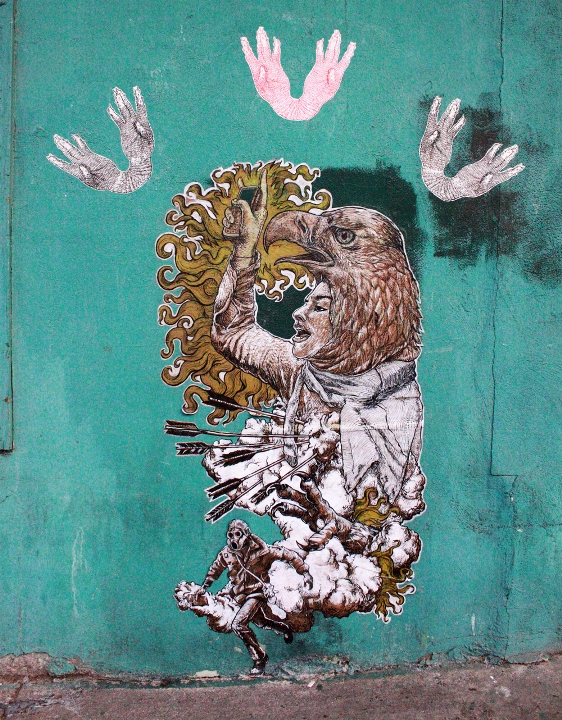
How do you feel about the evolution of graffiti and street-art?
Both are getting institutionalized and being tamed as they become accepted by the mainstream, so what interests me is how these art forms are going to stay culturally relevant. I’m interested in seeing who keeps them alive in a time when their explosion and exposure have added a lot of voices to the conversation. And let’s face it — a lot of these voices are not saying anything new or worthwhile.
Have you received formal art training?
I studied at the university level, but I saw studio work as limiting, although at the time I didn’t know why. What I was missing was the immediacy of communication that you get from working in public and everything else that this brings. But I’m not going to front. I learned so much from the artists I met in school and all the friends I made. Plus you can’t destroy an idea before you understand it.
Can you tell us something about this current mural at Bushwick Five Points?
I’m never sure what a wall will look like or say until I paint it. And even then, I am not sure. I love this ignorance. I like not knowing, as it keeps me fresh and honest. So this mural is — at one level — a portrait of Malik, a young man I met through developing workshops with Young New Yorkers, a Brooklyn-based restorative justice program that works with underage kids who are tried as adults in the city. My experiences led me to view the entire American justice system as a corruption which strips minorities of freedom and turns doing this into a lucrative business. We used to call this slavery. I think it’s called cost-effective business now. This portrait is a celebration of one of our system’s victims — who represents hope for change. I see my mural as a form of public prayer.
What do you see yourself doing five years from now?
It’s hard to say. It might be another city, or maybe even another continent. But I know it will be a natural progression from the work I’m now doing. I am also very conscious of where I don’t want to be or what I don’t want to do with my art so this will also guide me. I will be adding to the conversation, moving things forward and giving back all the love I receive.
Interview by Lenny Collado; photos by Tara Murray, Dani Mozeson and courtesy of the artist



